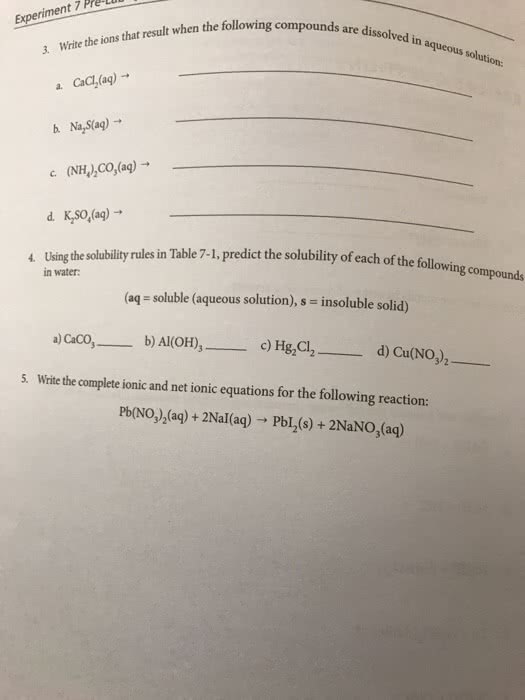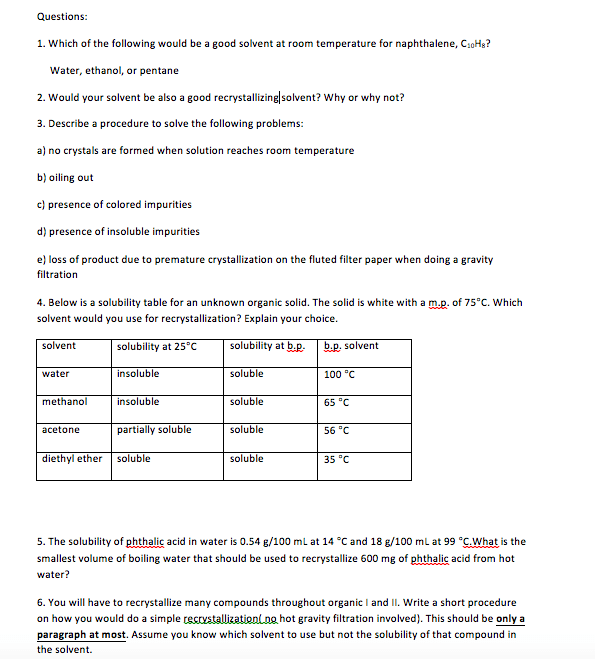CHEM 101L Chapter Notes - Chapter 6.1: Strontium, Rubidium, Barium
78 views3 pages
5 Nov 2016
School
Department
Course
Professor
Document Summary
Chem 101: solubility rules and identification of reaction occurrence. In general, many 1+ and 1- ion compounds are soluble in water, in other words they exist in aqueous states when dissolved in water. 2- ion compounds and 2+ with 1- ion compounds are also soluble in water solvent and are in an aqueous state. Many 2+ with 2- ion compounds will not be soluble in water and therefore exist in a solid state when in water. 2+ with 3- also follows that same rule of being insoluble. 3+and 3- ion compounds (for the majority of this course) will always be insoluble. There are some notable exceptions to this in organic chemistry, but those exceptions are to be discussed in a different higher division course, so for chem 101 purposes just know that 3+ with 3- will always be insoluble. 3+ and 2- ion compounds also tend to be insoluble.
Get access
Grade+20% off
$8 USD/m$10 USD/m
Billed $96 USD annually

Homework Help
Study Guides
Textbook Solutions
Class Notes
Textbook Notes
Booster Class
40 Verified Answers
Class+
$8 USD/m
Billed $96 USD annually

Homework Help
Study Guides
Textbook Solutions
Class Notes
Textbook Notes
Booster Class
30 Verified Answers
Related textbook solutions
Chemistry: Structure and Properties
2 Edition,
Tro
ISBN: 9780134293936
Basic Chemistry
5 Edition,
Timberlake
ISBN: 9780134138046
Principles of Chemistry Molecular Approach
4th Edition,
Tro
ISBN: 9780134112831
Principles of Chemistry Molecular Approach
3rd Edition, 2014
Tro
ISBN: 9780321971944
Chemistry: Structure and Properties
2nd Edition,
Tro
ISBN: 9780134293936
Chemistry: A Molecular Approach
3rd Edition,
Tro
ISBN: 9780321809247
Chemistry: A Molecular Approach
5th Edition,
Tro
ISBN: 9780134874371
Principles of Chemistry: A Molecular Approach
4th Edition,
Tro
ISBN: 9780134895741
Chemistry: The Central Science
14th Edition, 2017
Brown
ISBN: 9780134414232

